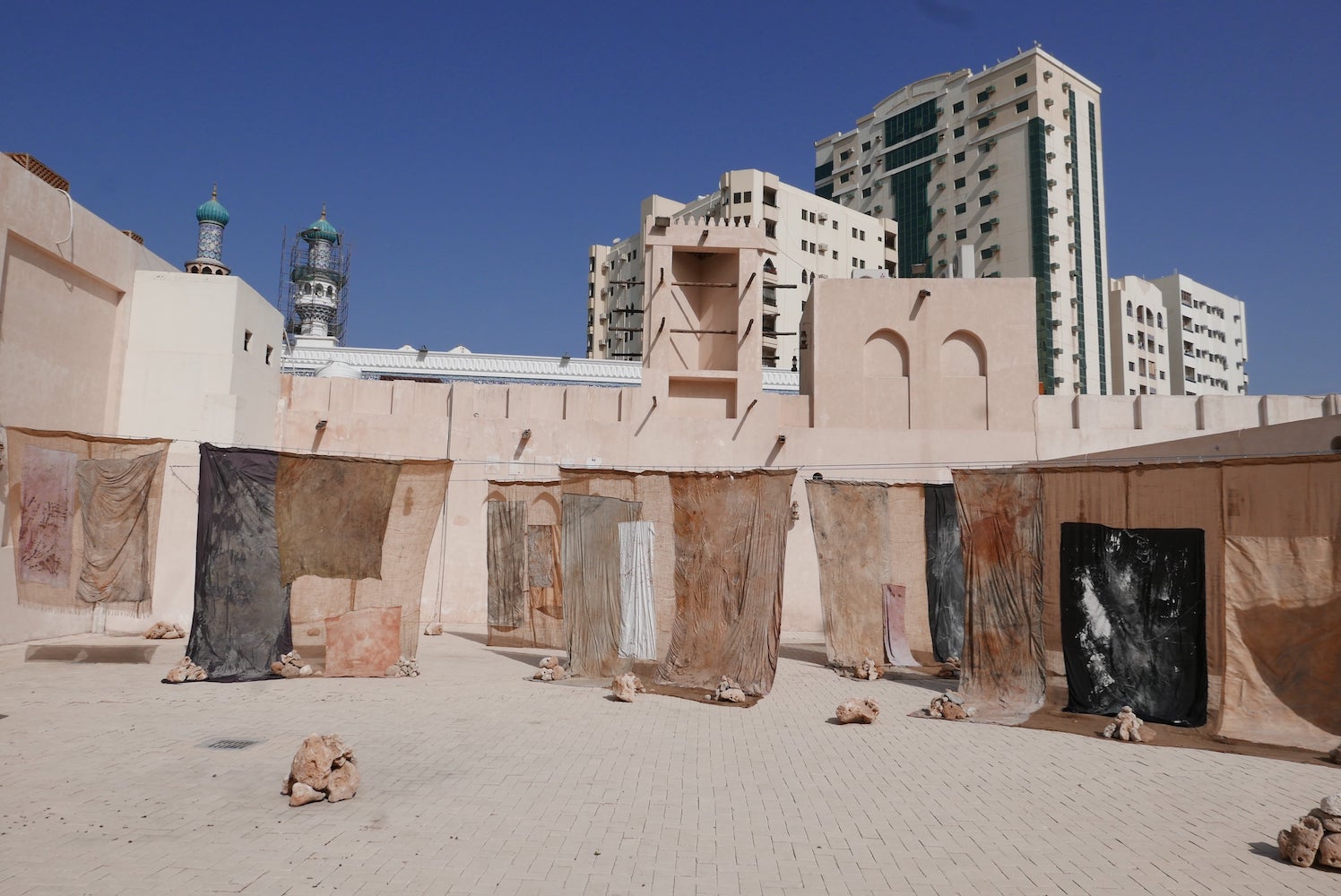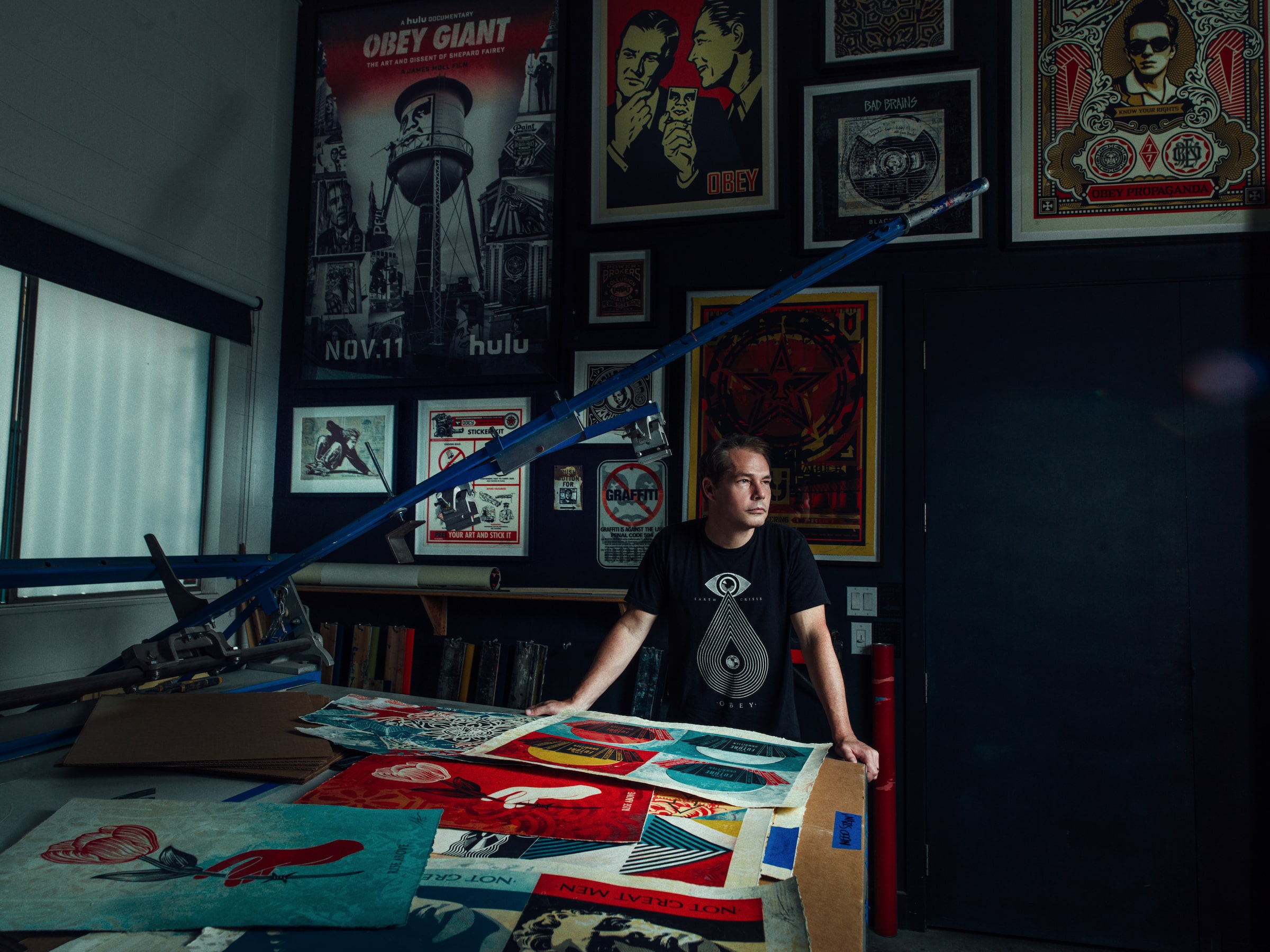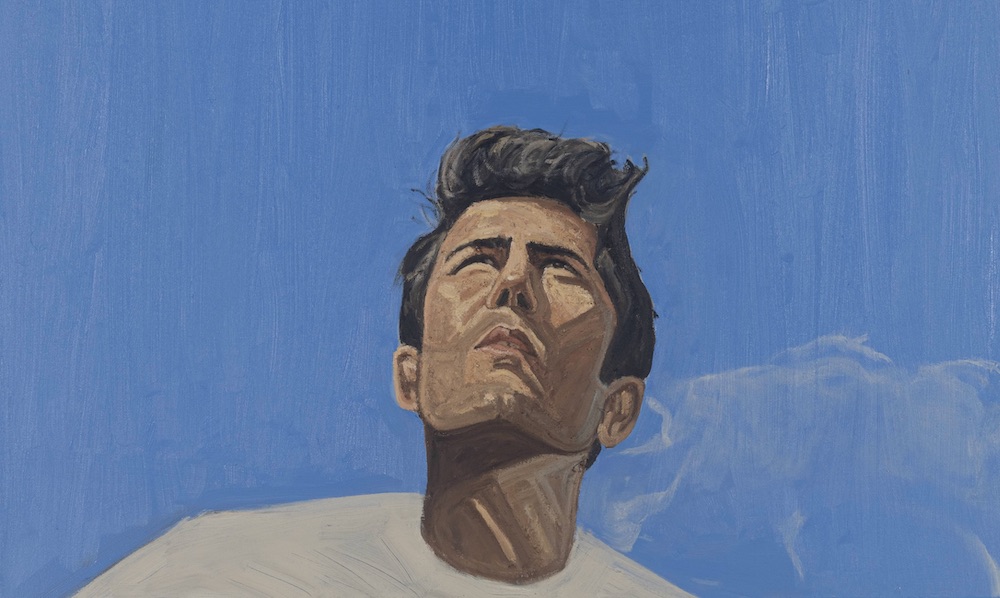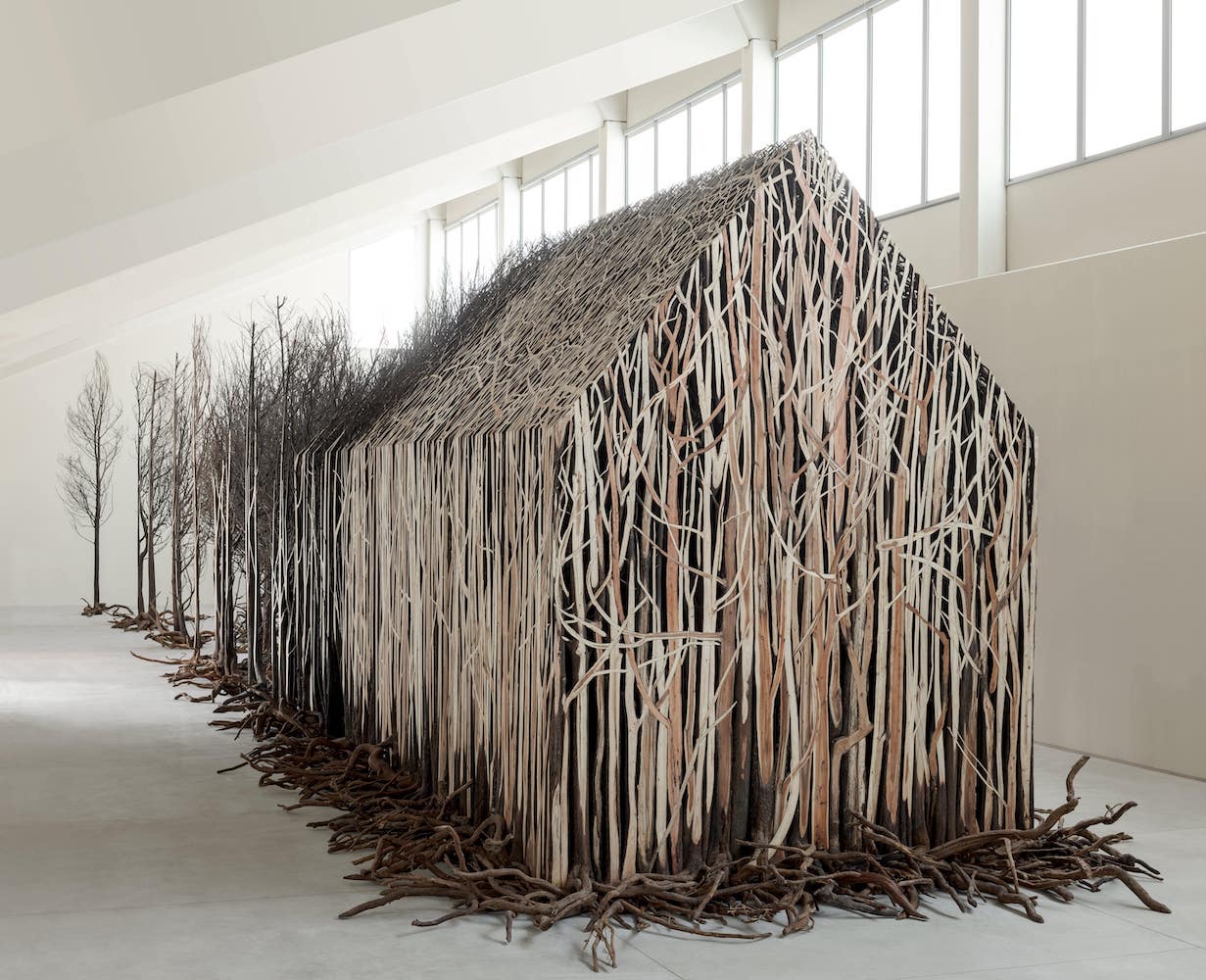Hoor Al Qasimi Curated the Sharjah Biennial “Thinking Historically in the Present”
The 15th edition of the Sharjah Biennial, entitled “Thinking Historically in the Present,” was on view this year in the United Arab Emirates from February 7 to June 11. Spanning five cities in Sharjah, the third largest territory in the country, the monumental fair featured art by over 150 artists and collectives from more than 70 countries. Activating 19 venues—including former banks, schools, hospitals, and markets, as well as the Sharjah Art Museum and the Sharjah Art Foundation—were over 70 new works, as well as an array of performances and interactive presentations that took place in spaces like the Sharjah Performing Arts Academy, an abandoned cinema, and the renovated Kalba Ice Factory.
For the 2023 iteration, the Biennial’s curator, and Sharjah Art Foundation’s director, Hoor Al Qasimi, recalled the framework of Documenta11 from 2002, hosted in Kassel, Germany, and curated by the late Nigerian curator Okwui Enwezor. “Two decades ago, I experienced Okwui’s Documenta11 which, with its radical embrace of postcolonialism, transformed my curatorial perspective,” said Al Qasimi. “His idea of ‘thinking historically in the present’ is the conceptual framework for the biennial, which we’ve sought to honor and elaborate on while also reflecting on the foundation’s own past, present, and future as the biennial marks its 30-year anniversary.”
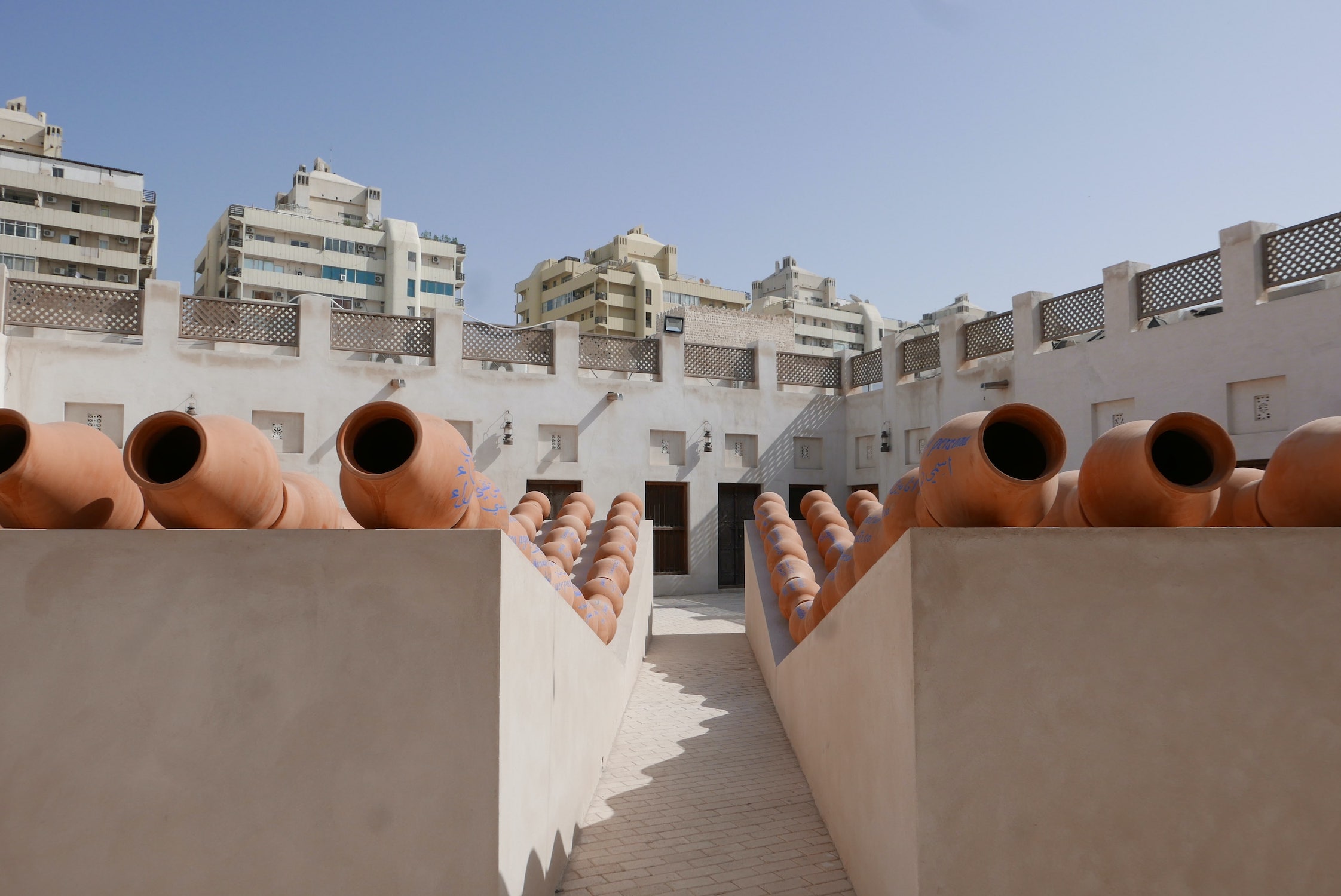
Carolina Caycedo, “Agua Pesada / Alma’ Althaqil,” 2023, photo by Eliza Jordan.
Alongside artists, curators, professors, collectors, and gallerists, Whitewall was in attendance at the biennial’s inauguration to explore each location. Throughout the week, we took buses from the Arts District in Sharjah to cities like Kalba, Khorfakkan, Al Hamriyah, and Al Dhaid to see films, paintings, sculptures, light works, photographs, textiles, immersive installations, artifacts, dance performances, and more. Seen in striking dialogue with one another, works communicated wide-ranging perspectives on nationhood, tradition, race, gender, body, and imagination encouraging the public to discuss complex subjects relating to life around the globe— including migration, colonialism, war, and human rights.
Whitewall spoke with Al Qasimi about curating this show over the past 20 years, and how a multifaceted show of this caliber has the power to have cultural, economic, and educational impact on the city of Sharjah.
The Sharjah Biennial is at the Center of the City’s Cultural Scene
WHITEWALL: Did growing up in Sharjah impact how you approached the show—in your hometown?
HOOR AL QASIMI: Growing up here in Sharjah, it was the only place where culture was taking place. I used to see young artists, especially girls, coming from Saudi, saying, “The Sharjah Biennial helped us see so much because we can’t travel so far.” They used to say that to me in my early days at the biennial, but now that there’s all these things happening in Saudi, there’s even more interest and people coming back and forth. The same with other places—like Qatar and Doha. People try to put us against each other, making it look like a competition, but nobody does that in the West. Why do we have to compete? The more people we have in the region, the better for everyone. That means there’s a lack, a need. A thirst. Everyone does things in their own unique way. It’s not about repetition; it provides collaboration.
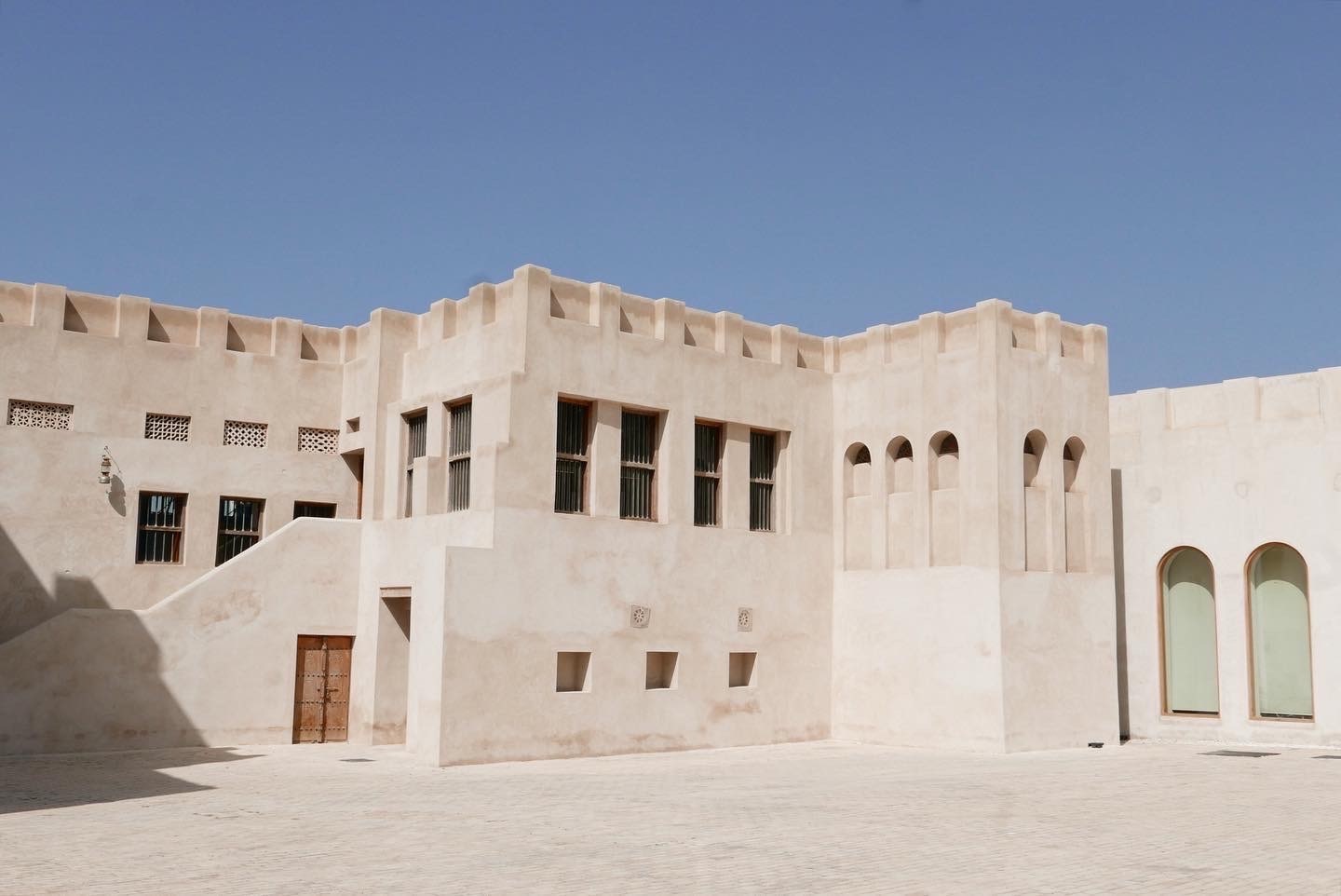
Photo of the Sharjah Art Foundation by Eliza Jordan.
WW: How would you describe Sharjah?
HAQ: The locals say Sharjah is real. That’s how they define it. I don’t think it’s superficial. It has a lot of layers, and you have to take your time to know it. It has many interesting neighborhoods. The name “Sharjah” means “where they sun rises,” so like “the land of the rising sun” in Japan. For us, it’s important to think of our place geographically, but also historically. It’s an important place where trades happen, where people move. The culture is so mixed. It’s home.
Al Qasimi’s Biennial Concept Subverts Tradition
WW: By abandoning the traditional pavilion model, and renovating a handful of older buildings instead of building new ones, how did the show spur civic inclusion for both locals and visitors?
HAQ: When you work with an existing building that has a place in people’s memories, you automatically have an audience. You have people’s trust. Suddenly, they have an appreciation for what you do. But this is an ongoing project. We have a lot of buildings we didn’t use in the biennial. I have a reputation for taking on buildings no one wants—old schools, markets. These conservation projects are part of the community and the civic engagement.
I’ve been wanting to turn the kindergarten into a community space where events happen. I don’t want it to be an arts center where people go to do workshops. I want people to go there to hang out and just happen to see that things are happening, like they did in the old community centers in the eighties and nineties everywhere. We used it during the last biennial, so you see some of the remnants of the plant paintings from the workshops the artist did with the local kids. I kept that. I also fixed the playground equipment and put it all back for the kids. But the last biennial there, a lot of the international visitors felt they were in the middle of nowhere. No toilets; it was hot. This time I wanted to put in new toilets, a little café, and an office so someone is there all the time. If there is place for them to spend time, then they’ll enjoy it. And they’ll give the artworks the time they deserve.
The space outside our office, where children play, there’s always an artwork there. It’s outside my office, so everyone was waiting to see what would be there. I said I wanted to move the lamppost, which they kept breaking, and put a water fountain around the corner so they know it’s there but it’s out of the way in the shade. I wanted to light the space up from a building across the street. That was my intervention. It wasn’t an artwork, but you really understand the place. That was important. The impact is not only what you see in terms of the exhibition, but the space you create every day. So it’s important that this is not just for an arts crowd that comes and goes. It’s really for the people that live there, too. We’re trying to create jobs as well. A lot of the people that are giving tours and are guides are kids that came to our workshops growing up. That’s important to me.
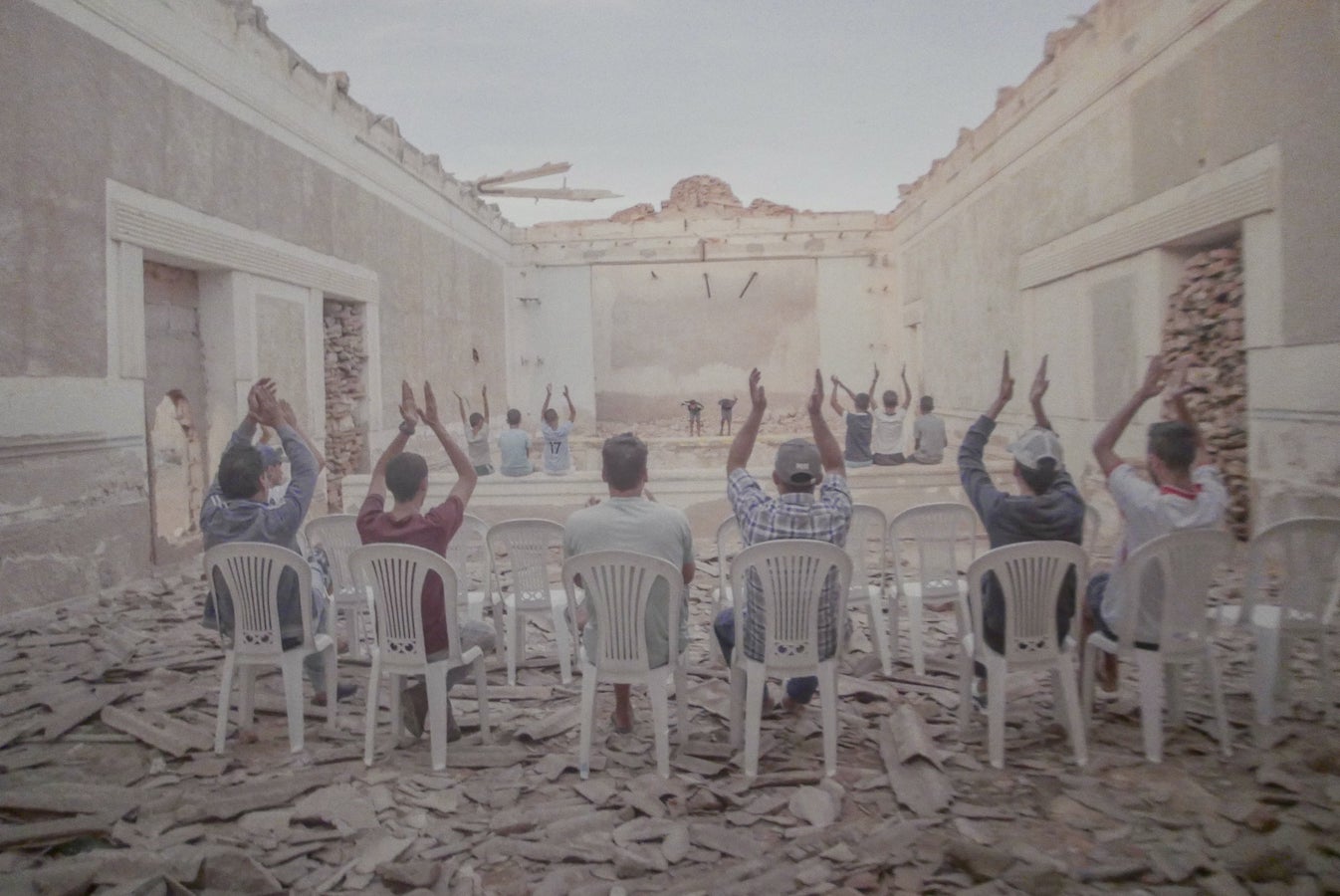
Photo by Eliza Jordan.
WW: How have you seen the public react?
HAQ: It’s been great. I was in the clinic and a young family living near the clinic came in and asked about the work. There was another woman who came because her father runs the supermarket next door. She came with her two little children where kids could color. She kept saying, “Beautiful biennale! Beautiful playground! Beautiful space! My kids come here and color!” That’s the thing. If they get used to this being their space, what can happen 20 years down the line? The difference I’m seeing now is because it’s been 20 years for me. I’ve seen differences as time has gone by, but the impact is suddenly something I feel because a whole generation has grown up with the biennial.
The Sharjah Biennial is a Representation of its City
WW: How did this biennial take stock of what a biennial could be, and what a city could offer?
HAQ: A biennial is about a city. For me, that’s very important. I have this thing where I can’t detach that biennial from the city. In terms of Sharjah, it’s my city and I know it. You need to understand the city before you do something, because it can bring something not only for the visitors who would have never seen these places, but the locals. One of our local guides in Sharjah who lives here said, “I’ve never been to the east coast before.” They’ve never been because there hasn’t been a moment of a reason to go. The biennial is also making them explore their own space.
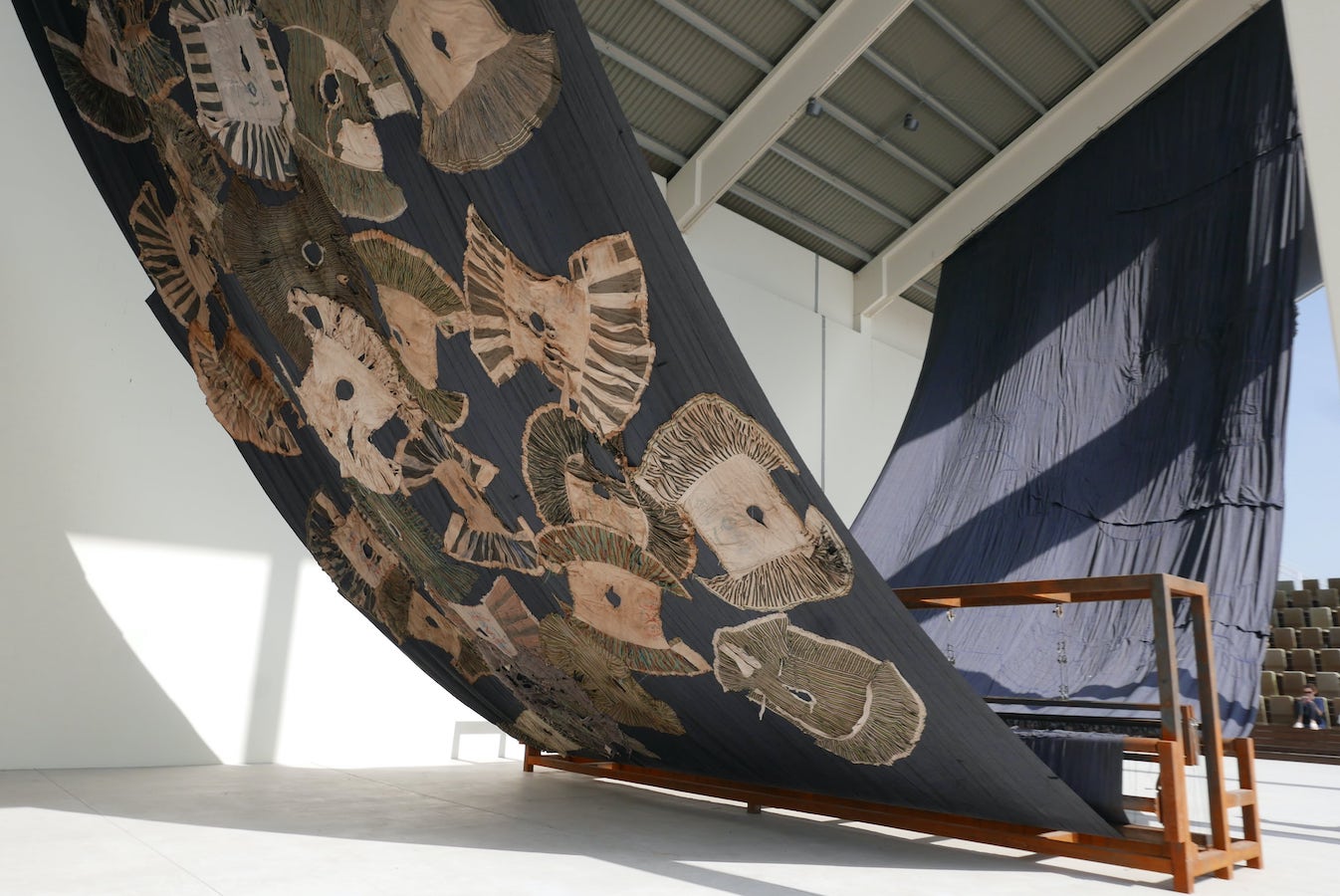
Photo of Ibrahim Mahama’s installation by Eliza Jordan.
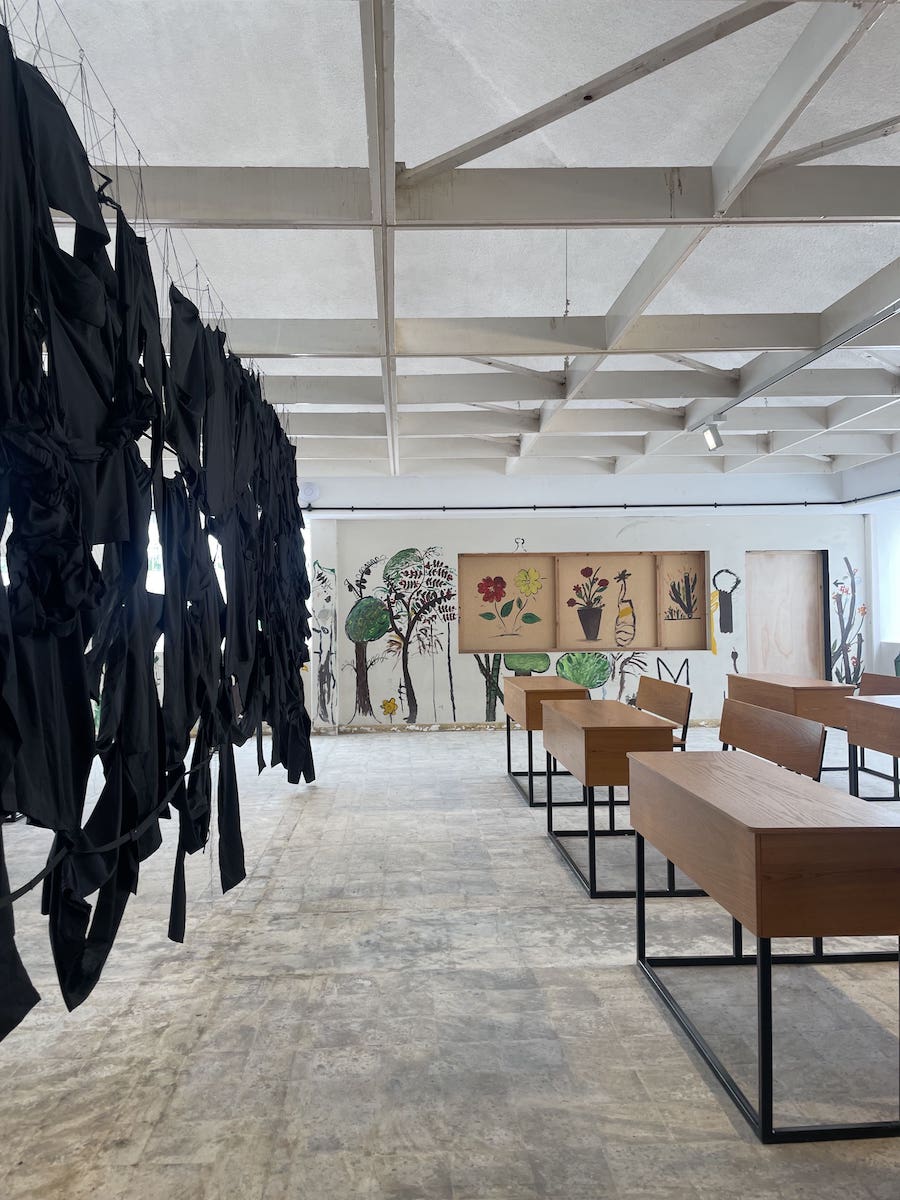
Henri Dono, “Fermentation of the Brain,” 2015, photo by Eliza Jordan.



